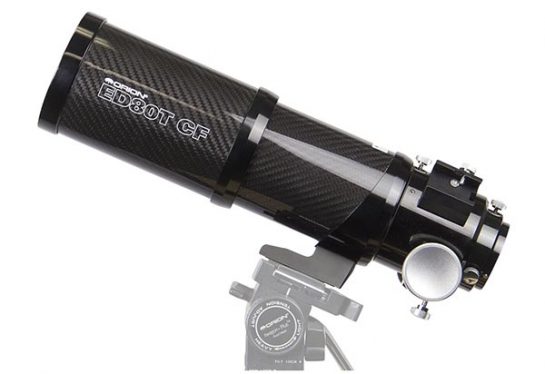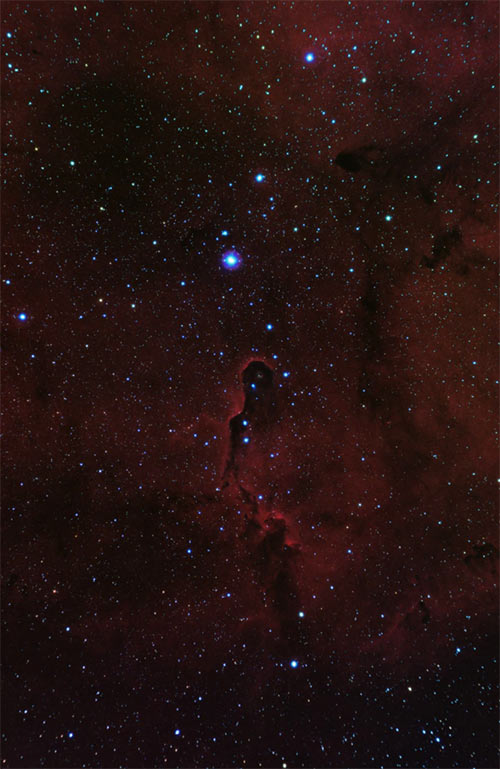Backyard of the Week – September 18, 2018
As far as deep sky astrophotography equipment setups go, the following rig fits the profile of the exact configuration that I recommend for beginner to intermediate imagers. (Which is where I consider myself to be).
The legendary Orion Atlas EQ-G GoTo telescope mount makes another appearance, this time with a matching Orion APO in carbon fiber.
The following equipment profile from Gibran Pierluissi shows off a wide-field astrophotography telescope with an impressive camera combo. This week’s Backyard of the Week comes from the tropical skies of Guantanamo Bay, Cuba.
Location: Guantanamo Bay, Cuba
This has to be one of the prettiest backyards submitted thus far. In the larger version of the image, you can see the mountains in the distance. Another thing I noticed right away, look how low that Polar axis is! Quite a big difference from the upward 43-degree angle I am used to seeing here in Canada.
Gibran Pierluissi
The Veil Nebula by Gibran Pierluissi
Equipment List:
| Mount: | Orion Atlas EQ-G GoTo Telescope Mount |
| Telescope: | Orion ED80T CF Refractor Telescope |
| Mono Camera: | ZWO ASI1600 MM Pro |
| Color Camera: | ZWO ASI1600 MC Pro |
| Filter Wheel: | ZWO 7 position Filter Wheel |
| Guide Scope: | William Optics Z61 |
The Telescope:
Gibran uses an Orion ED80T Carbon Fiber refractor telescope to capture incredible photographs of objects in space. The 480mm focal length of this telescope makes it perfect for large DSO’s such as the Veil Nebula and the Andromeda Galaxy.
A wide field apochromatic triplet like the Orion ED80T offers remarkable astrophotography performance in a compact and lightweight package. You don’t need to worry about a regular collimation routine as you do with mirror-system telescopes.
It’s compact weight and size means that intermediate level mounts like the Orion Sirius EQ-G or Atlas have no trouble carrying the load with lots of room for additional photography gear.
This telescope is currently on my Top 5 list of astrophotography telescopes.
Orion 80EDT CF Specs
- Diameter: 80mm
- Focal Length: 480mm
- Focal Ratio: f/6
- Weight: 5.5 lbs
- Glass: FPL-53
The Mount:
This GoTo equatorial mount has been a favorite of mine since the first time I witnessed one in use at my Astronomy clubs observatory. The Atlas is a step up from the Sirius EQ-G model, giving it a heavier overall payload capacity.
These mounts are widely used for astrophotography and known to be incredibly capable and reliable in a variety of different configurations. The Orion Atlas EQ-G Goto telescope mount includes a 42,000 object database, illuminated polar axis scope, and an autoguider port.
The Orion Atlas EQ-G GoTo Telescope Mount
The Camera:
It’s no surprise that the ZWO ASI cameras are incredibly popular. I have had great experiences with both the ASI071 MC Cool and ASI294MC Pro models myself.
As seen in the equipment photo, Gibran has both a color ZWO ASI1600 MC Cool and a Mono ASI1600MM Pro. Cooled color and monochrome CMOS sensor cameras for any occasion!
Gibran uses one camera through his primary imaging telescope, and one for autoguiding. This is a clever and versatile setup as the cameras can easily be swapped depending on the type of image being captured.
The Elephant’s Trunk Nebula by Gibran Pierluissi
Guide Scope:
Talk about a slick guide scope! The William Optics Zenithstar 61 is an incredible little APO refractor that can be used as a primary imaging telescope as well. The Z61’s compact size and wide-field of view make this an excellent choice for autoguiding solution. With the ZWO 7 position filter wheel attached, it appears as though he uses the Z61 for some wide field imaging as well.
View Gibran’s Astrophotography Gallery on Facebook
Thank you for sharing your backyard astrophotography setup with us, Gibran!
For a chance to be featured as the Backyard of the Week, please fill out this form and include the details of your setup. This is a great way for beginners to see a deep-sky imaging setup that is being used to successfully photograph the night sky.
Please include a link to your online gallery (website, Flickr gallery, Astrobin) so that I can share your imaging results on this page. If you have already submitted your backyard setup without a link to your gallery, please feel free to make another submission!
Helpful Resources:
Beginner Astrophotography Guide
William Optics Zenithstar 61 Review
Astrophotography Tips (No Telescope Needed)




